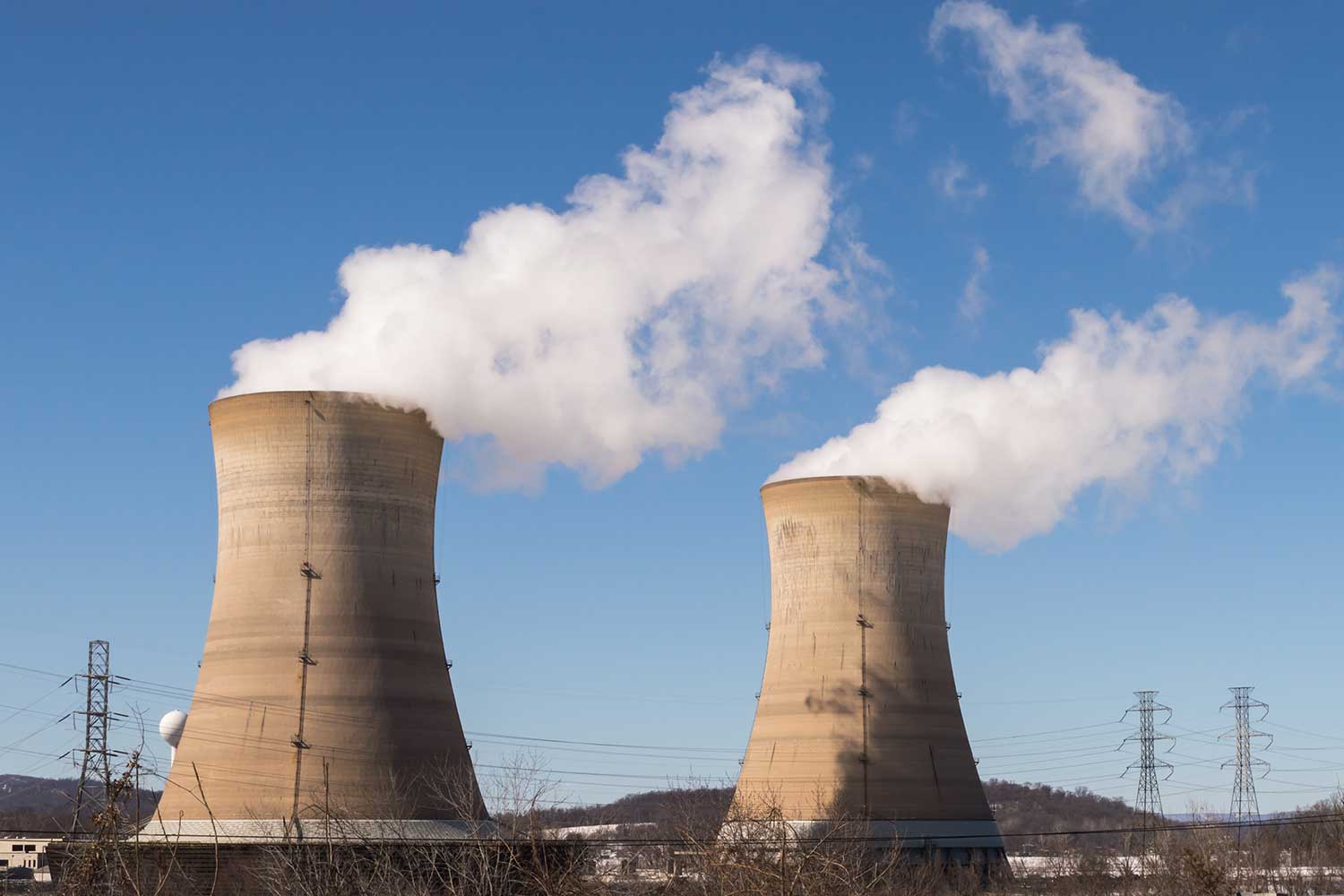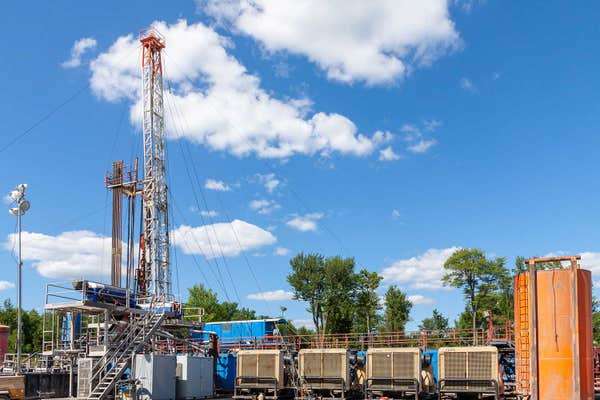Hey team, and welcome back to one5c! The biggest, most impactful ways each of us can help dial down planet-warming emissions every day have something crucial in common. Taking transit instead of driving. Trading red meat for tofu. Keeping food waste out of the landfill. These are all big swings that actually comprise a lot of little swings, which is what makes them so powerful—and doable.
One that we talk about less, though, is, well, talking. While I do mean we should have real conversations about the climate, I also mean that we can take a moment here and there to consider the meanings embedded in the words we choose. That starts with understanding why we say what we do—like why one5c generally uses “climate crisis” over “climate change.” This morning, Olivia’s got another look at reshaping our vocabulary, and this time it’s about our country’s biggest energy source. —Corinne
SPONSOR

WHAT WE’RE INTO THIS WEEK
By Corinne Iozzio

Accountability check
Can nuclear fix AI’s energy problem?
How should a climate-conscious person feel about AI? What about nuclear energy? It’s complicated. All the major tech companies (the Googles, the Amazons, the Microsofts) are staring down spikes in their greenhouse gas emissions, and power-hoovering AI is the culprit. Microsoft in particular clocked a 30% jump since 2020. Its plan to pull back on the need to burn dirty fossil fuels: Go nuclear. Last week, plans rolled out to reopen the shuttered Three Mile Island nuclear plant in Pennsylvania, and its owner will sell all the energy from that site to the tech company. Earlier this year, Amazon inked a similar deal with another Keystone State nuclear site. “There’s no version of the future of this country that doesn’t rely on these nuclear assets,” the chief executive of Constellation, the company who owns the Three Mile Island plant, told Bloomberg.
Good read
Tabulating what food really costs
It’s time we talk about grocery prices—and, no, we don’t mean inflation. We’re talking about an economic concept called “true cost accounting,” which factors in the environmental costs of agriculture based on its emissions, water use, and ecological impacts. To be clear: Proponents aren’t advocating for raising prices, but rather that their calculations be used to raise awareness about the implications of good choices, particularly when it comes to protein sources. To explore what this means for the average American grocery haul, The New York Times tapped Dutch nonprofit True Price to tabulate the price tags of some of our favorite foodstuffs—and reveal what putting better data out there could mean for fixing our food system.
Cause for optimism
The first EV-dominant country on Earth
Last week, Norway announced that it has more electric vehicles on the road than gas-powered cars, making it the first nation in the world to pass that tipping point. There’s an important asterisk here, because diesel-powered whips compose a little more than one-third of the fleet in the Scandinavian country. Even so, the success showcases the types of nudges that entice drivers to make the switch. The government, for example, lets EV drivers use bus lanes, lowers tolls and parking costs for electric cars and trucks, and excludes them from sales and emissions taxes. All this has added up to 26.3% of all registered vehicles running on electrons instead of dead dinosaurs. In the U.S., Department of Energy estimates put that number at 1.2%.
Study guide
The persistent trouble with food packaging
We’re literally surrounded by plastic every day—and so is our food. New research published in the Journal of Exposure Science and Environmental Epidemiology has quantified how much of what’s in those polymers (that is, chemical additives like forever chemicals, phthalates, and metals) makes it into our bodies. They found about 25% of the 14,402 known chemicals in packaging in samples of blood, breast milk, and hair. Though the researchers didn’t study the specific health impacts of these chemicals, previous work has found the substances cause disruption throughout the body, specifically within the endocrine system, which is responsible for the body’s hormones. Like microplastics, the substances are released at high temperatures or through friction. Here’s our best advice for avoiding them.
MIC-DROP CLIMATE STAT
9x
The increase in emissions when recycling plastic chemically instead of mechanically—the conventional method. Keep this in mind the next time someone says chemical recycling is the answer to our plastic problem.
GREENWATCH
Why do we call methane ‘natural gas’?
By Olivia Gieger

Questions on climate have been somewhat far from the spotlight on the presidential campaign trail, with one big exception: fracking.
Fracking is the primary way U.S. fossil-fuel companies procure natural gas, making it a major facet of the current U.S. energy mix. The process shoots super-pressurized water, sand, or gas into shale rock deep underground, which forces hidden pockets of methane to emerge. The fact that the practice is bad news, environmentally speaking, is far (far) from a secret. Living near a well has well-documented public health harms, and methane leaks have major global warming potential.
Yet, the public perception of fracking is a bit of a mixed bag. Why? Because methane’s day-to-day persona as “natural gas” does a great job of dissembling the fuel’s dirty implications. While the name itself is not necessarily wrong, it has become a turbocharged greenwashing tool for the fossil-fuel industry—so much so that activists are pushing for a rebrand.
Why do we call it ‘natural gas’?
The origin of the phrase “natural gas” is actually pretty benign—and boring. Vox published what’s become the prevailing history, which goes like this: When folks in the 19th century observed methane rising out of cracks in the ground, they compared it to the whale oil and coal that had ruled the day. It was colorless and odorless and required far less processing, thus, people saw it as natural, and the name stuck. Since then, the oil and gas industry has run with it.
People know what it means, though, right?
Not really! A 2020 survey co-authored by the Yale Program on Climate Communications and Climate Nexus found that 76% of Americans have a favorable attitude toward “natural gas.” However, when respondents are asked about methane gas, that percentage drops to 42%. The survey also found that participants associate “natural gas” with words like “clean,” and not with methane at all, suggesting many people do not even realize the true nature (hah) of the fuel.
What makes things even more confusing is that the fossil-fuel industry has doubled down on making methane sound even more legit. Have you encountered the phrase certified natural gas or “responsible gas”? This label centers on the idea that gas producers can gain a certification for reducing excess emissions and leaks in the refining process—and then charge more for it. Nearly 40% of gas produced in the United States is currently certified. “One of the biggest problems I have with it is that it’s being used as justification to continue oil and gas production—and to expand and ramp up extraction,” says Dakota Raynes, a researcher at Earthworks, an advocacy and research group focused on oil, gas, and mineral extraction.
Plus, much of this additional layer of oversight doesn’t even work, according to a 2023 report by Earthworks and Oil Change International on which Raynes was the lead co-author. The report looked at a site monitored by Project Canary, one of the three main certification groups, and found that the watchdog failed to recognize all of the 22 leaks and pollution events that happened in the seven-month monitoring period. The following year, the company caught only one out of 23. “Regardless of the sample size, what our research really shows is that there’s a serious lack of transparency in all this. Certification is sort of a big black Pandora’s box,” Raynes adds.
What’s being done about it?
This February, a group of seven senators wrote to the Federal Trade Commission, asking them to crack down on the greenwashing of certified natural gas. The senators pointed to certification as “another dangerous greenwashing scheme” at play, the same way calling it “natural” or a “bridge fuel” to renewables is.
The senators are among a growing swell of advocacy groups, leaders, and academics peeling back the adjective “natural” in favor of labels that more closely represent the reality of the situation. Instead, they might use the terms “methane gas,” “shale gas,” “fracked gas,” “fossil gas,” or any variation of those (like “fracked methane gas”). As for the major party candidates on the campaign trail? It may be a while before we hear them use any of this language when it comes to the political land mine of pumping gas out of the ground.
